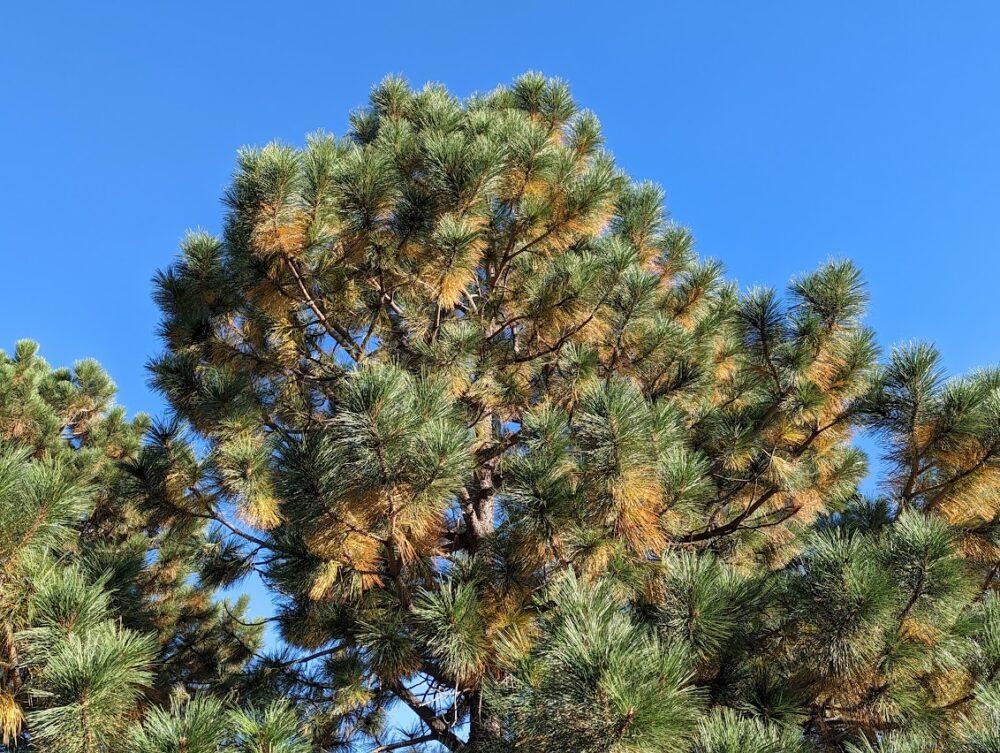Watching the leaves on trees change color and then drop, creating a beautiful carpet of yellows and reds, is one big reason why I love autumn. But when our pine trees and other conifers do something similar, it can be alarming for folks who aren’t familiar with the concept of seasonal needle shed.
Some of my Ponderosa pines are just now gearing up for a major shed. Notice I said some. Three or four of my Ponderosas are going into a shed while several others aren’t, which can add to the confusion. I’ll touch on that in a moment.
So what’s going on?
Seasonal needle shed or needle drop will always show up on the oldest needles. Those needles can be the oldest ones on the part of the bark closest to the trunk. They can also be farther out on a branch, where a main branch separates into a smaller one.
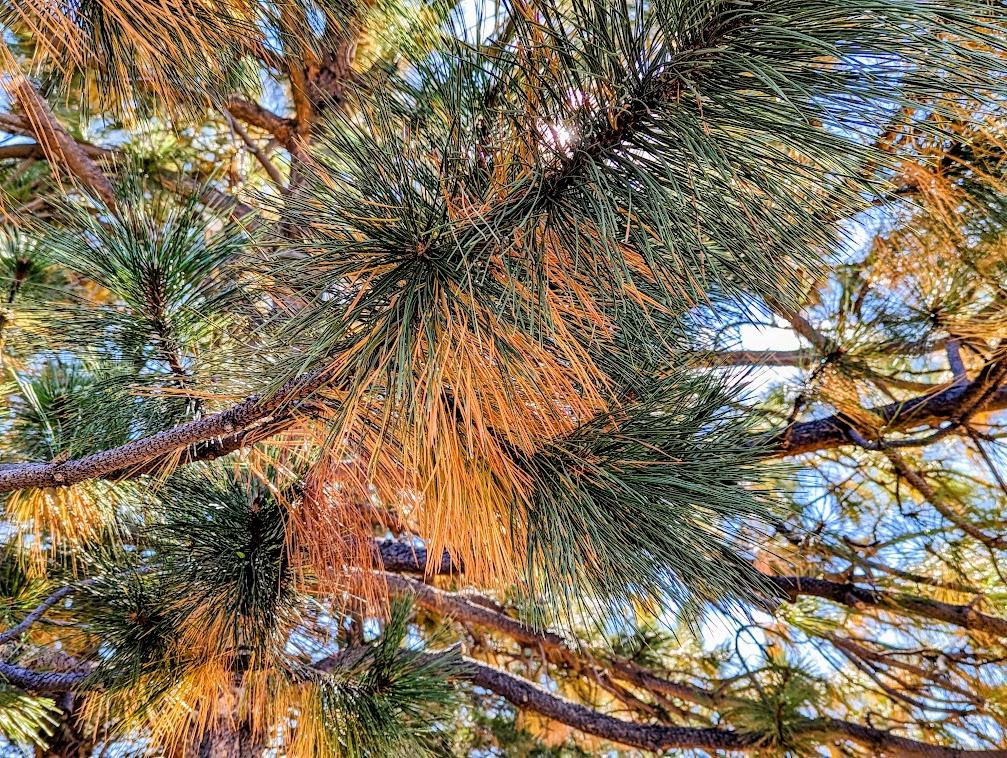
Conifers drop those inner needles primarily because they’re old and heavily shaded. Their job is done. The tree will grow new needles to do their work.
It helps to remember that the needles on conifers serve the same purpose as leaves on deciduous trees, which are the trees that drop their leaves every fall. Like broader leaves, conifer needles capture sunlight and convert it into food for that tree or shrub. They also tolerate cold and ice, and the waxy coating on conifer needles helps conserve moisture. That makes many conifers especially suited for colder climates.
Things seems to change overnight
Seasonal needle shed can be alarming because it seems to happen almost overnight. Many home owners and tree lovers assume it’s insects or disease at work and then reach for a pesticide. Others might think it’s the drought and end up watering far more than necessary. Odds are, neither response is necessary.
When I look at my Ponderosas, I know I’m not seeing drought damage because of where the fading needles are on the tree, as described above. Drought damage is much more severe and can discolor all of the needles along entire branches throughout the tree. That drought stress looks like this.
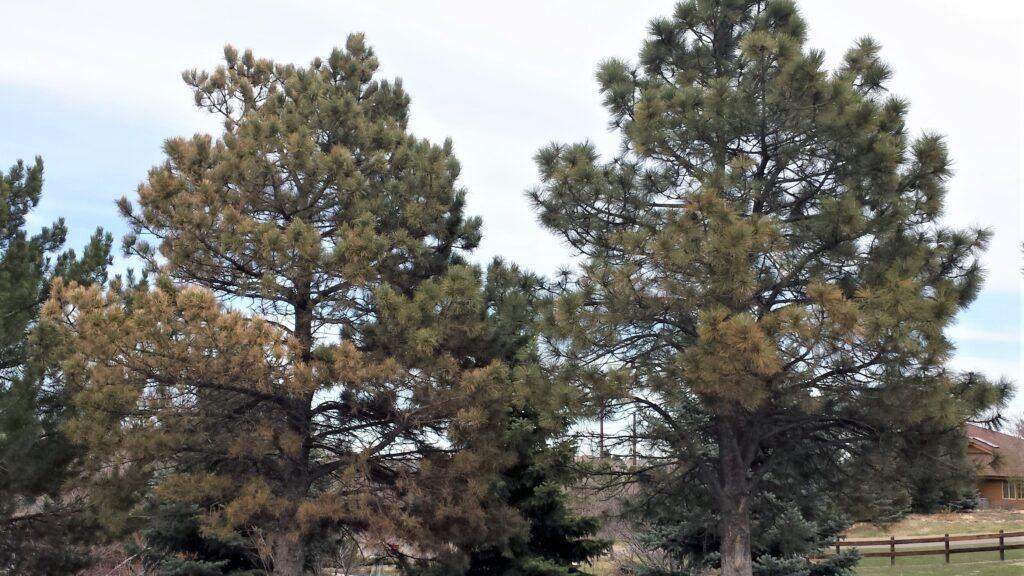
Pines, spruce, firs and arborvitae will shed, too
There are a lot of conifers besides my beloved Ponderosas that go through a shed cycle. Many of them shed about once a year, usually in the fall. But every now and then, a few of my Ponderosas have dropped their needles in early summer. And with my fir trees? It’s anybody’s guess! Some types of conifers shed every two to three years, or even longer.
Weather, along with the various varieties of trees and shrubs and the general health of each individual plant can make a difference, too. Serious stress of any type can trigger a heavier and earlier shed than normal.
If you’re worried, examine the new growth
One way to assess a tree’s health is to look at the newest growth on the tips of the branches. Does it look healthy? Is it well-attached and reasonably soft and supple?
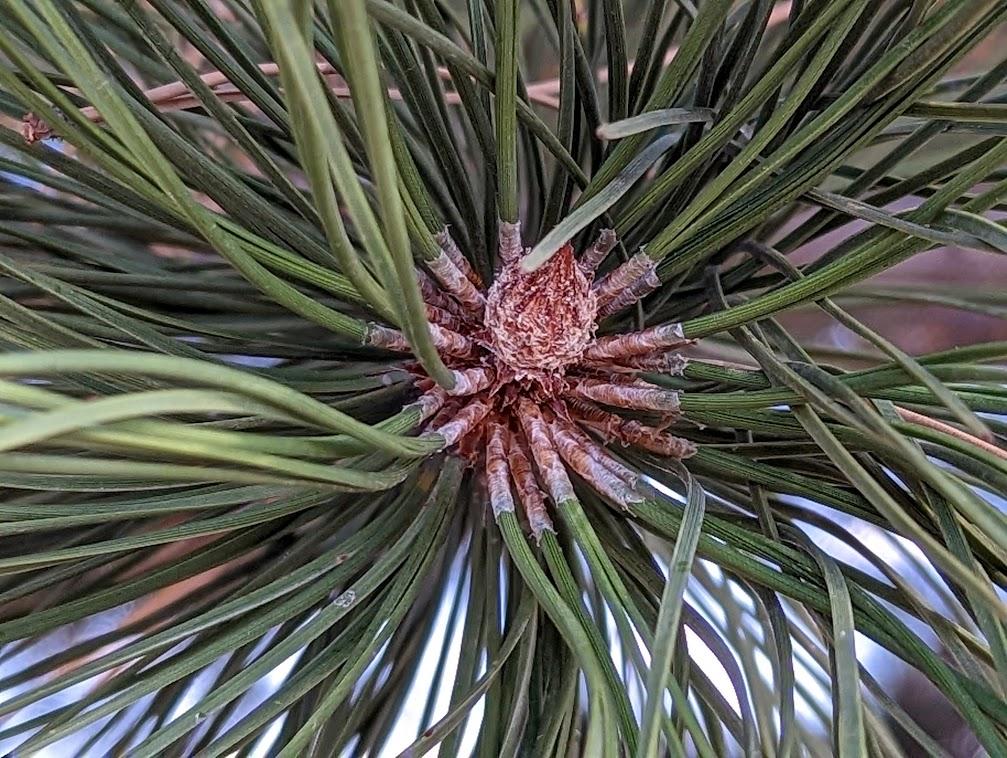
And while you’re examining the new growth, look for borer holes in the bark. Are there holes that are larger or different than other indentations in the bark… holes that seem out of character? Are there any small piles of sawdust at the base of the tree? Are there cracks or other openings in the bark that are oozing sap or pitch? Aside from the yellowing and browning inner-most needles, does the tree look healthy?
These older faded needles may hang on until a strong wind blows them off. You can also grab a clump of these interior needles and give a tug. If they come off in a clump, but near-by green needles stay put, you’re almost certainly dealing with a shed.
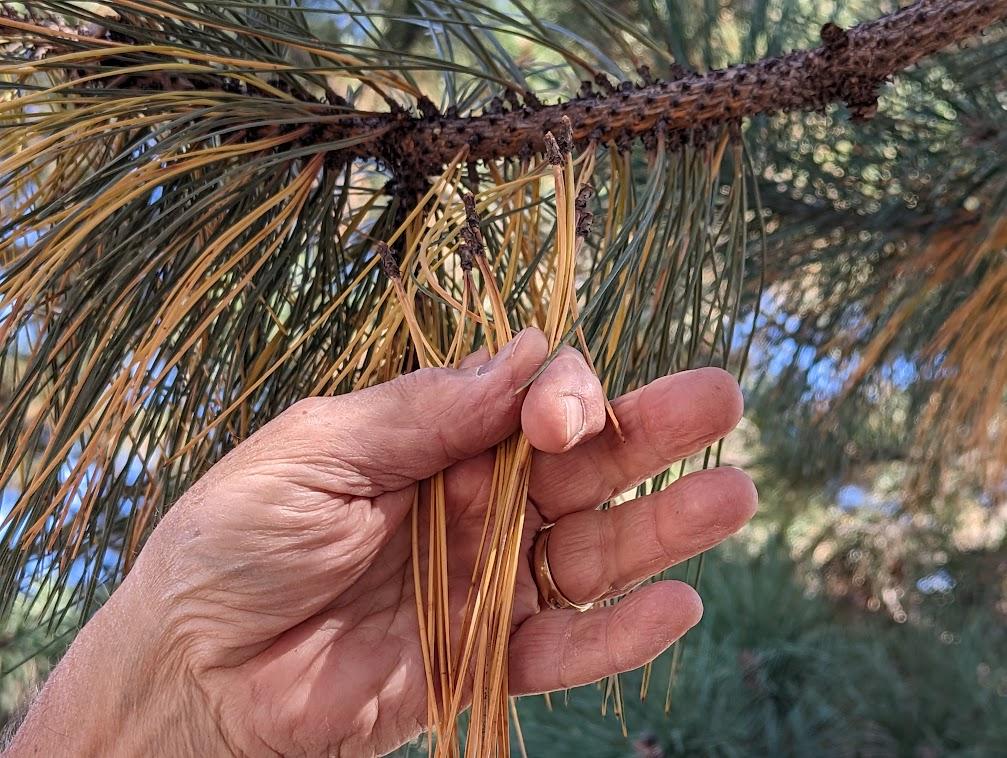
If you do see any of those symptoms or suspect other issues, grab you smart phone, take your best wide- and tight-shots of the problem and bring those pictures to Dick’s Corner at Tagawa Gardens for a diagnosis. In the meantime, take a deep breath. Your conifers may simply be doing what conifers do.
